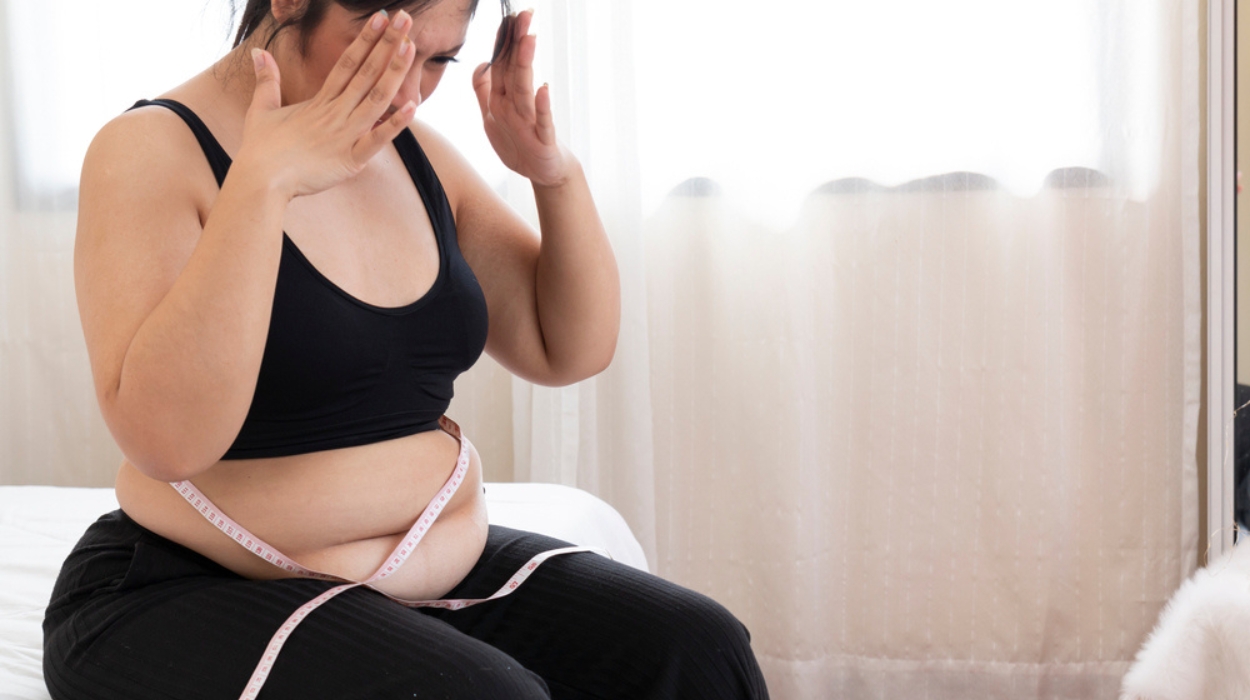How To Lose Chest Fat: Best Ways To Get Rid Of Chest Fat In 2024

It is no secret that maintaining a fit body is easier said than done. The accumulation of excess body fat can be frustrating. The body has an uncanny ability to store fat in various places, and for many people, especially men, the chest seems to be a common target.
If you are wondering how to lose chest fat, we can help. This guide will delve into chest fat and provide tips, workouts, and nutrition advice tailored specifically to lose weight in this area.
How To Get Rid Of Chest Fat
Getting rid of chest fat typically involves a combination of dietary changes and lifestyle adjustments. Here are 5 ways to get rid of chest fat:
- Create a calorie deficit.
- Change your diet.
- Cardiovascular exercises.
- Strength training.
- Get enough rest.
Effective Ways To Reduce Chest Fat
Let’s dive right into the heart of the matter. What are the best ways to reduce chest fat? Here are five tips:
Featured Partner Offer

PhenQ
- Helps to burn fat
- Crushes food cravings
- Boosts energy and balances mood
- High-quality formula
Money Back Guarantee and Free US Shipping
Create A Calorie Deficit
Do you want to know how to get rid of man breasts? The first step is to create a calorie deficit.[1] The general principle of losing fat is to shed more calories than you consume. To begin, it’s crucial to understand your basal metabolic rate, which represents how many calories your body needs for basic functions at rest. Calculate this using formulas like the Harris-Benedict or Mifflin-St Jeor equations, which are readily available through online calculators.
Next, determine your total daily energy expenditure[2] (TDEE), which accounts for your BMR and physical activity level. Multiply your BMR by an activity factor corresponding to your daily exercise routine. Common factors include sedentary, lightly active, moderately active, very active, and extra active. This calculation provides your TDEE.
Once you have your TDEE, you can establish your calorie intake goal. If you want to lose chest fat quickly, aim for a calorie deficit of about 500 to 1,000 calories daily. This deficit should help you lose a healthy and sustainable rate of about one to two pounds per week. It’s equivalent to a weekly calorie deficit of 3,500 to 7,000 calories.
Change Your Diet
A good diet makes all the difference in your weight loss journey. Concentrate on consuming a balanced diet[3] consisting of lean proteins, whole grains, fruits, vegetables, and healthy fats. Lean proteins are an integral part of a weight-loss diet. Opt for foods like skinless chicken breast, turkey, salmon, tofu, or beans.
Swap out refined grains for whole grains like quinoa, brown rice, whole wheat pasta, and oats. These provide a steady energy source and fiber to help control your appetite. Also, fruits and vegetables are low in calories and packed with vitamins, minerals, and antioxidants. Add them to every meal.
Keep in mind to regulate portion sizes in check to prevent overeating. Use smaller plates and measuring tools to maintain proper portions. In addition, fat-burning supplements/fat-burners are helpful to your journey.
Monitoring your progress is essential. Keep an eye on your weight, body measurements, and how your clothes fit to gauge how well you’re doing. Adjust your calorie intake if necessary because as you lose weight, your calorie needs may change.
Cardiovascular Exercises

After changing your diet, start getting into exercises targeting chest fat loss. A common exercise for chest fat is cardio. Cardio workouts[4] play a significant role in burning calories, promoting overall fat loss, and enhancing cardiovascular health.
While cardio exercises can’t specifically target fat loss in a particular area, such as the chest, they contribute to a reduction in overall body fat, including the chest. Cardio is also helpful for arm and stomach fat, amongst others.
To start, engage in weekly cardio sessions. For example, running or jogging are powerful cardiovascular exercises that engage your chest muscles and burn many calories. Similarly, cycling offers a low-impact but highly effective cardio workout. It primarily targets the lower body but engages the core and upper body, contributing to fat loss.
Swimming is another excellent full-body workout that can help reduce chest fat while strengthening the chest and back muscles. The water’s resistance adds an extra challenge, making it an ideal choice for cardiovascular fitness.
Strength Training
When you search for how to lose chest fat for men, strength training is one of the most common results you will find. Strength training[5] is a fundamental component of any effective strategy for losing chest fat, especially for men. It helps sculpt and define the chest muscles and contributes significantly to fat loss by increasing your metabolic rate.
Here are some strength training exercises to add target chest fat:
Compound Chest Exercises
Focus on compound exercises that work multiple muscle groups, including the chest. The bench press, incline bench press, and push-ups are excellent choices. These exercises engage the pectoral muscles, shoulders, and triceps while activating your core for stability.
Dumbbell And Barbell Workouts
Incorporate dumbbell and barbell exercises for variety and to challenge different muscle fibers. For example, dumbbells and chest presses with dumbbells or barbells provide a comprehensive chest workout.
Bodyweight Exercises
Push-ups and variations like wide-grip push-ups and decline push-ups are effective bodyweight exercises for targeting the chest. They can be done virtually anywhere, making them a versatile choice.
Chest Machines
If you have access to a gym, chest-specific machines such as the chest press machine and pec deck machine can help you isolate and strengthen the chest muscles.
Ensure you use proper form and technique to prevent injury and effectively target the chest muscles. If you’re new to strength training, consider working with a personal trainer to learn the correct form. Also, aim to strength train at least two to three times a week, targeting the chest during each session. Consistency is key to seeing results over time.
Get Enough Rest

Rest is an underrated tool for losing weight. It perfectly supplements your workouts[6] and other lifestyle changes you embark on to lose weight. When you don’t sleep enough, your hormonal systems can become disrupted. This leads to increased appetite and potential weight gain, including fat accumulation in the chest area.
Rest is crucial for muscle recovery and growth, especially after strength training workouts targeting the chest. It allows your muscles time to repair and grow stronger, contributing to your progress. Ensure you prioritize sleep and create a conducive sleep environment with consistent sleep schedules and relaxation practices to enhance your chest fat loss.
What Causes Chest Fat?
On the journey of learning how to get rid of chest fat, we should understand what causes it. Chest fat is also commonly called “man boobs” or gynecomastia.[7] It is the accumulation of excess fat tissue in the chest area.
It can affect any gender, although it’s more commonly associated with males. About 30% of men[8] will experience gynecomastia once in their life. Chest fat can result from a variety of other factors, including:
Weight Gain And Obesity
One of the most common causes of chest fat is excess body weight. When a person gains weight, they may accumulate fat in various body parts, including the chest. Consuming a diet high in calorie-dense, processed, fried foods and sugary beverages can contribute to weight gain. Overeating, irregular meal patterns, and emotional eating can also lead to excess calorie intake.
Hormonal Imbalance
Regarding chest fat, hormones can be the main culprits. Estrogen dominance, where the balance between estrogen and testosterone in the body is skewed in favor of estrogen, is often the leading cause of chest fat in men. The condition is called gynecomastia. Conversely, low testosterone levels can also contribute to developing chest fat.
Genetics
Genetics can play a role in determining where your body tends to store fat. The distribution of fat in the body is partially determined by genetic factors, and it can vary significantly among individuals. Some people may be genetically predisposed[9] to accumulate fat in specific regions, such as the chest, abdomen, hips, or thighs.
Lifestyle Factors
Poor diet and lack of physical activity can contribute to weight gain and chest fat. Eating a diet high in processed foods and sugars while leading a sedentary lifestyle can accumulate fat throughout the body.
Underlying Medical Conditions
Certain conditions, such as liver disease, kidney disease, thyroid disorders, and tumors, can disrupt hormone balance and contribute to chest fat.
Tips To Get Rid Of Chest Fat Quickly
As our five tips have shown above, getting rid of chest fat quickly involves a combination of targeted exercises, dietary changes, and lifestyle adjustments. Losing fat from a specific area of your body is not always easy. However, here are some tips on how to lose breast fat quickly:
- Balanced diet: Adopt a balanced diet[10] with lean protein sources, healthy fats, whole grains, and plenty of fruits and vegetables. Avoid or limit processed foods, sugary drinks, and excessive consumption of unhealthy fats.
- Portion control: Pay attention to portion sizes[11] to prevent overeating. Smaller, more frequent meals can help control your appetite and maintain steady blood sugar levels.
- Hydration: Stay well-hydrated, as dehydration can sometimes lead to overeating or cravings for unhealthy foods.
- Reduce alcohol and sugar intake: Limit your alcohol consumption and reduce your intake of sugary beverages and snacks, as they can contribute to fat gain.
- Stress management: Practice stress-reduction techniques like meditation, deep breathing exercises, or yoga. High stress levels can lead to emotional eating and fat gain.
- Stay consistent: Consistency is key. Stick to your exercise and diet plan over time to see results. It’s important to be patient, as spot reduction takes time.
If you’re struggling to lose chest fat, consider consulting a fitness trainer or a registered dietitian for personalized guidance and support.
Featured Partner Offer
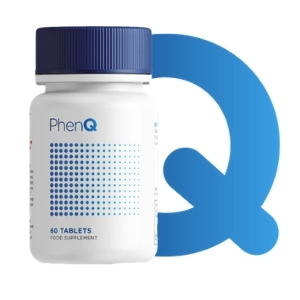
Common Mistakes To Avoid
Losing chest fat is not easy, regardless of following the steps above. Avoiding common mistakes is crucial. Here are some common mistakes to avoid:
- Neglecting diet: Relying solely on exercise without paying attention to your diet is a common mistake. Remember that diet plays a significant role in fat loss.
- Overemphasizing spot reduction: As mentioned earlier, spot reduction[12] is not very effective. Focusing exclusively on chest exercises won’t necessarily reduce chest fat faster.
- Inadequate protein intake: Protein is essential for muscle repair and growth. Ensure you’re getting enough protein in your diet to support muscle development.
- Overtraining: Exercising too frequently or intensely without adequate rest can lead to burnout and injury and hinder progress. Make sure to have rest days in your routine.
- Relying on supplements: Supplements can be helpful but shouldn’t replace a balanced diet. Avoid the mistake of thinking supplements alone will lead to significant fat loss.
- Inconsistent effort: Consistency is key. Skipping workouts or straying from your diet plan too often can hinder progress.
- Ignoring rest: Your muscles need time to recover and grow stronger. Don’t underestimate the importance of rest.
Avoiding these mistakes is your surest bet to ensure you are getting the most out of your new weight loss journey and starting a healthy lifestyle.
Summary
Losing chest fat is a journey that demands dedication. While spot reduction may not be the most effective way to target this area, the principles outlined can help you lose chest fat easily. Remember, there are no shortcuts when it comes to sustainable fat loss. It’s about making healthier choices in your diet and exercise routine and sticking to them over time. Patience is key, as real and lasting changes don’t happen overnight.
Frequently Asked Questions
Losing chest fat can be challenging because spot reduction is ineffective. It requires a combination of exercise, diet, and patience.
The time to lose chest fat varies, typically taking weeks to months. Consistency and effort influence the duration.
Being skinny but having chest fat could be due to pseudo-gynecomastia, where excess fat accumulates in the chest without glandular breast tissue enlargement. Genetics and lifestyle factors may contribute.
Resources
- Howell, S. and Kones, R. (2017). ‘Calories in, calories out’ and macronutrient intake: the hope, hype, and science of calories. American Journal of Physiology-endocrinology and Metabolism, [online] 313(5), pp.E608–E612. doi:https://doi.org/10.1152/ajpendo.00156.2017.
- Ostendorf, D.M., Caldwell, A.E., Creasy, S.A., Pan, Z., Lyden, K., Bergouignan, A., MacLean, P.S., Wyatt, H.R., Hill, J.O., Melanson, E.L. and Catenacci, V.A. (2019). Physical Activity Energy Expenditure and Total Daily Energy Expenditure in Successful Weight Loss Maintainers. Obesity, [online] 27(3), pp.496–504. doi:https://doi.org/10.1002/oby.22373.
- Ju Young Kim (2021). Optimal Diet Strategies for Weight Loss and Weight Loss Maintenance. Journal of obesity & metabolic syndrome, [online] 30(1), pp.20–31. doi:https://doi.org/10.7570/jomes20065.
- Bellicha, A., Marleen, Battista, F., Beaulieu, K., Blundell, J., Luca Busetto, Carraça, E.V., Dicker, D., Encantado, J., Ermolao, A., Farpour‐Lambert, N., Adriyan Pramono, Woodward, E. and Jean‐Michel Oppert (2021). Effect of exercise training on weight loss, body composition changes, and weight maintenance in adults with overweight or obesity: An overview of 12 systematic reviews and 149 studies. Obesity Reviews. [online] doi:https://doi.org/10.1111/obr.13256.
- Wewege, M.A., Desai, I., Honey, C., Coorie, B., Jones, M.D., Clifford, B., Leake, H.B. and Hagstrom, A.D. (2021). The Effect of Resistance Training in Healthy Adults on Body Fat Percentage, Fat Mass and Visceral Fat: A Systematic Review and Meta-Analysis. Sports Medicine, [online] 52(2), pp.287–300. doi:https://doi.org/10.1007/s40279-021-01562-2.
- Yannakoulia, M., Anastasiou, C.A., Karfopoulou, E., Artemios Pehlivanidis, Panagiotakos, D.B. and Vgontzas, A. (2017). Sleep quality is associated with weight loss maintenance status: the MedWeight study. Sleep Medicine, [online] 34, pp.242–245. doi:https://doi.org/10.1016/j.sleep.2017.01.023.
- Fagerlund, A., Lewin, R., Rufolo, G., Elander, A., Fabio and Selvaggi, G. (2015). Gynecomastia: A systematic review. Journal of Plastic Surgery and Hand Surgery, [online] 49(6), pp.311–318. doi:https://doi.org/10.3109/2000656x.2015.1053398.
- Neslihan Çuhacı, Şefika Burçak Polat, Evranos, B., Ersoy, R. and Bekir Çakır (2014). Gynecomastia: Clinical evaluation and management. Indian Journal of Endocrinology and Metabolism, [online] 18(2), pp.150–150. doi:https://doi.org/10.4103/2230-8210.129104.
- Golden, A. and Kessler, C. (2020). Obesity and genetics. Journal of the American Association of Nurse Practitioners, [online] 32(7), pp.493–496. doi:https://doi.org/10.1097/jxx.0000000000000447.
- Freire, R. (2020). Scientific evidence of diets for weight loss: Different macronutrient composition, intermittent fasting, and popular diets. Nutrition, [online] 69, pp.110549–110549. doi:https://doi.org/10.1016/j.nut.2019.07.001.
- Ranil Jayawardena, Hasinthi Swarnamali, Ranasinghe, P. and Hills, A.P. (2021). Impact of portion-control plates (PCP) on weight reduction: A systematic review and meta-analysis of intervention studies. Obesity Research & Clinical Practice, [online] 15(2), pp.106–113. doi:https://doi.org/10.1016/j.orcp.2021.01.008.
- Paoli, A., Casolo, A., Matteo Saoncella, Bertaggia, C., Fantin, M., Bianco, A., Marcolin, G. and Moro, T. (2021). Effect of an Endurance and Strength Mixed Circuit Training on Regional Fat Thickness: The Quest for the ‘Spot Reduction’. International Journal of Environmental Research and Public Health, [online] 18(7), pp.3845–3845. doi:https://doi.org/10.3390/ijerph18073845.
More from Weight Management
-
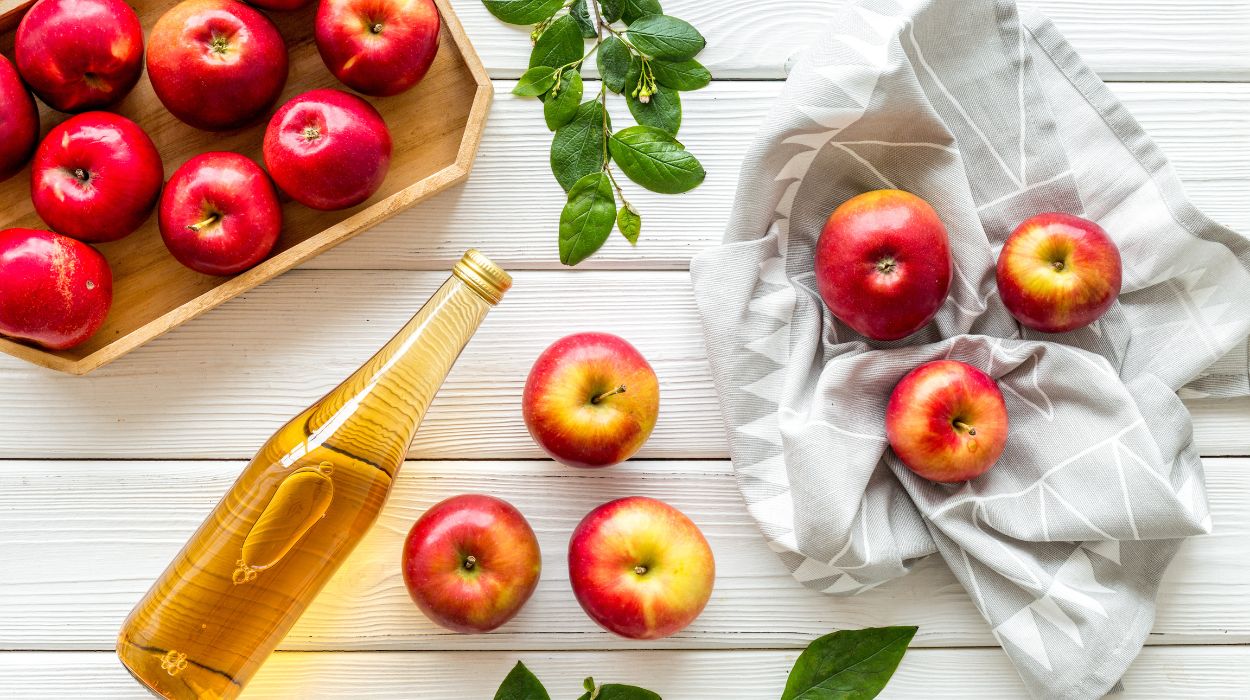
How To Drink Apple Cider Vinegar For Weight Loss In 1 Week In 2024
January 10, 2024
Taking apple cider vinegar has become a sensation for its supposed health benefits, despite its sour taste. Apple cider vinegar may…Read more -
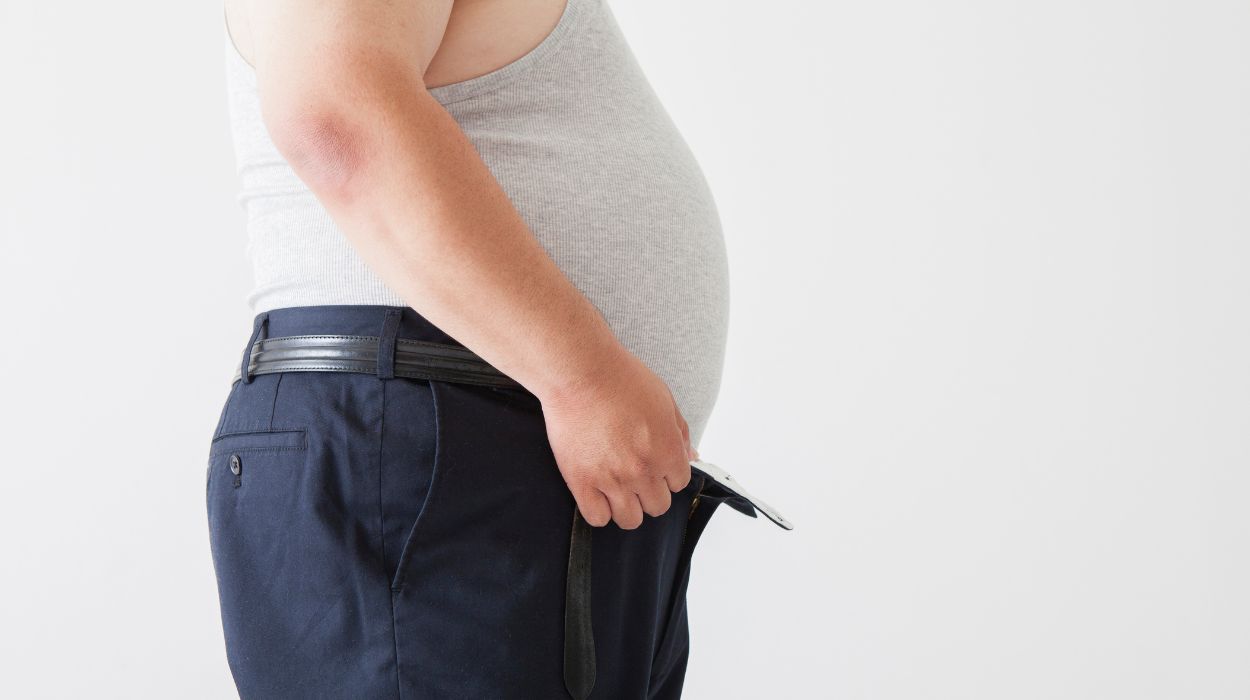
How To Lose Belly Fat After 50: Here’s 10 Tips For People Over 50 To Try In 2024
December 27, 2023
Losing weight over 50 can feel challenging, especially in stubborn areas like the abdomen. As we age, hormonal changes, slower metabolism,…Read more -
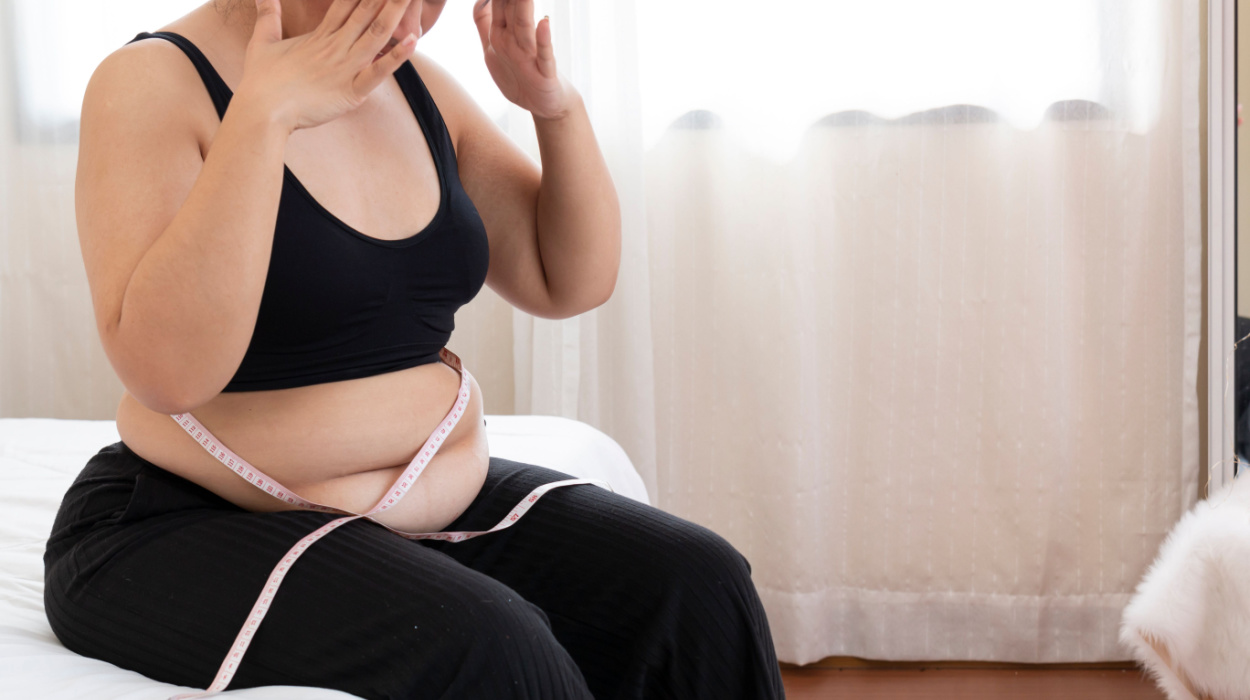
How To Lose Weight With Hypothyroidism – 10 Ways You Should Try In 2024
December 22, 2023
Hypothyroidism[1] is a condition that occurs when a person has low levels of thyroid hormone, and it most often develops when…Read more -

Hypnosis For Weight Loss: Unlocking Your Mind’s Potential For Success 2024
December 20, 2023
You’ve heard about various methods and tools to achieve weight loss and you might have looked into how to get ozempic.…Read more

